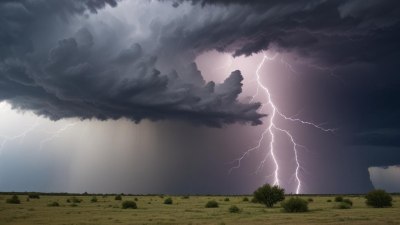Why Tug-of-War Is 80% Weather and 20% Strategy
Discover how weather influences tug-of-war outcomes and the minimal role of strategy in this age-old contest.

Image by rawpixel-com on Freepik
Tug-of-war is a classic competition where two teams pull on opposite ends of a rope, each aiming to bring the other across a designated line. While it may seem that success in this sport is primarily about strength and strategy, a closer look reveals that external factors, especially weather, play a crucial role. In fact, one could argue that tug-of-war is 80% about weather conditions and only 20% about the strategies teams employ. This perspective can provide athletes and enthusiasts alike insight into how to prepare more effectively for competitions and align their training with realistic expectations.
The Role of Weather in Tug-of-War
Weather conditions can significantly impact the outcome of a tug-of-war match. Factors such as wind, humidity, temperature, and even ground conditions can alter the performance of the competitors in ways that may not be immediately obvious. Let’s break down the key weather elements that affect performances in tug-of-war.
1. Wind Conditions
Wind can be a double-edged sword in tug-of-war. If the wind is blowing strongly against one team, it can hinder their pulling strength as the resistance might cause the rope to bow or create additional drag. Moreover, teams can use wind to their advantage, especially if their strategy includes positioning themselves in such a way to use the wind as a barrier against their opponents. In outdoor competitions, the direction and intensity of the wind can drastically shift the dynamics of the game.
2. Ground Conditions
The type of ground on which the tug-of-war match is held also plays a vital role. Wet or muddy conditions can significantly reduce traction, making it more difficult for teams to maintain their grip and pull effectively. Conversely, a dry, firm surface can provide contestants with the necessary traction to dig in and leverage their pulling potential. Understanding ground conditions can help teams prepare appropriately, from choosing the right footwear to developing techniques suited to the surface they are competing on.
3. Humidity and Temperature
The climate on the day of the competition can also impact performance. High humidity levels can lead to increased fatigue among competitors. When the body is unable to cool itself effectively, performance can taper off rapidly. Additionally, extreme temperatures—whether hot or cold—can affect muscle function, leading to reduced power and endurance. Teams are best served by understanding how to adapt their training for various weather conditions, thus preparing them for the physical challenges presented by sudden weather changes during competition.
4. Seasonal Considerations
Different seasons present unique weather challenges that teams must consider. For instance, spring and summer competitions may bring unpredictable weather patterns, including sudden rain showers or thunderstorms, which not only affect ground conditions but also complicate the logistics of the match itself. On the other hand, winter competitions might involve snow and ice, creating a completely different set of challenges. Preparation for these seasonal changes can mean the difference between victory and defeat.
5. Psychological Factors of Weather
The psychological aspect of dealing with weather conditions cannot be overlooked. Teams that poorly handle rain or extreme heat may become demoralized, lowering their overall performance. Managing mental resilience in the face of adverse weather conditions is often as critical as the physical preparation. Developing a team culture around overcoming such setbacks can provide a significant edge during competition.
Strategy: The Secondary Element
Despite weather being the dominant factor in tug-of-war, strategy still plays a role, albeit a lesser one. Strategy encompasses various elements such as team coordination, timing, and strength utilization, but these factors can often be undermined by the realities of the weather. Here’s why the significance of strategy fades when compared to weather effects:
1. Team Coordination
Coordination among team members is essential to pulling effectively together. However, if the weather conditions are against a team—such as high winds or wet muddy ground—even the best-coordinated pulls may fail. Thus, while training for strong team coordination is essential, it must be complemented by an understanding of how to adjust tactics based on current weather conditions.
2. Timing and Rhythm
Establishing a pulling rhythm can also provide an advantage during matches. However, if weather conditions interfere with this rhythm—whether it be a sudden gust of wind or muddy footing—timing strategies may need to be adjusted or abandoned altogether. The weather can often dictate the rhythm and timing, leaving teams to react rather than execute planned strategy.
3. Strength Utilization
While employing individual strengths is a significant aspect of tug-of-war strategy, conditions such as temperature and humidity can impact a team’s physical performance. A team may have the most physically capable competitive members, but if they are unable to perform due to heat or slick surfaces, strength becomes an irrelevant factor.
Embracing the Elements
Ultimately, while strategy has its place in tug-of-war, it is essential to recognize how weather is the key player in the game. Teams that embrace the elements and prioritize understanding and adapting to weather conditions tend to perform better in the long run. As the saying goes, “Fail to prepare, prepare to fail.” Thus, teams should invest equal effort into honing their understanding of nature's influence while refining teamwork and strategy. Regardless of which aspect is ultimately more important, acknowledging that tug-of-war is a complex interplay of strategy and conditions will benefit everyone involved in the sport. Competitions may vary greatly based on season and conditions, but through awareness and preparation, teams can improve their chances of success, making the most out of what nature throws at them.











